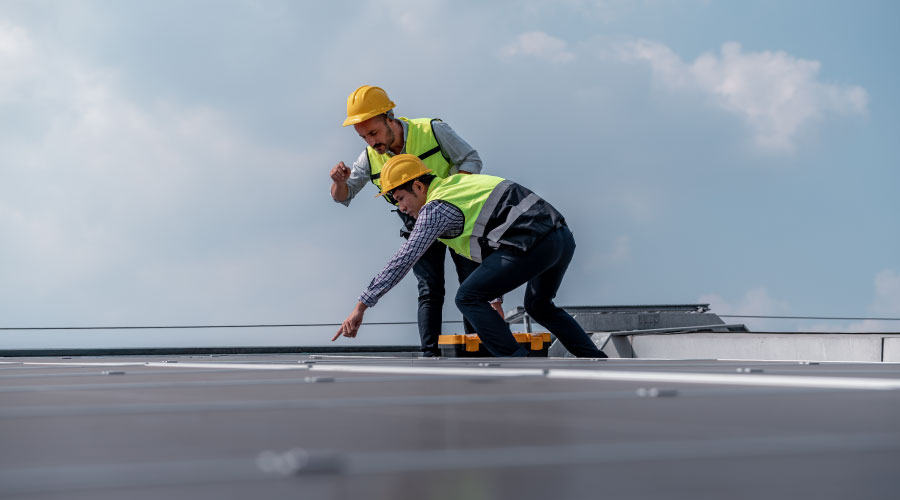Facility managers who are trying to get the most from their existing investments in roofing systems — and increasingly, this includes just about all facility managers — may find roof coatings to be an answer. These coatings can make existing roofs last much longer, postponing the investment of time and money required to tear off and replace them. Joe Mellott, director of business development with Garland Industries, describes coatings as a tool to extend the life of a roof. Coatings typically cost less than completely new systems.
White or light-colored roof coatings can offer additional benefits. By lowering the temperature of the roof surface, they can reduce the energy consumed by the facility. That can be critical for buildings located in areas where the utility imposes peak energy prices during periods of high energy demand, such as weekday afternoons in the summer.
In fact, the reflectivity provided by white and light-colored roof coatings can bring the temperature of the roof surface to within about six degrees of the ambient temperature, says Scott Gayle, national sales manager with American WeatherStar.
The temperature drop can also extend the life of the roof itself. "Many materials age in direct relation to how hot they get," says Steve Heinje, technical service manager with Quest Construction Products, LLC. "That's a reason to 'sunscreen' a roof."
The drop in temperature also reduces the load on the mechanical systems, extending their lives as well. That can be an important consideration, especially in cooler climates, where the drop in energy use provided by a white roof coating might not be as pronounced as in hotter regions.
Not surprisingly, applying a roof coating also produces less noise and disruption than does tearing off an old roof or re-covering with an additional roofing system. "There's no debris thrown off the top of the building to speak of," Gayle says. The coatings typically are either rolled or sprayed on; both are fairly non-disruptive application methods.
Coating Considerations
While roof coatings offer a number of compelling benefits, it's important to recognize that "there's no one coating for all roofs," says Lee Martucci, product manager, GAF.
One factor that can influence a coating's suitability is the location of the building and roofing system it will be applied to. Along with temperature, the humidity level also has an impact. Coatings containing in-can and out-of-can mildewcides — agents that can prevent biological growth — are more important in the southeastern U.S., but generally aren't as critical in the arid southwest. The average relative humidity can top 90 percent in parts of Florida.
The tendency of water to "pond" or settle on a roof can impact the coating choice as well. Some commercial low-slope roofs experience ponding water on a regular basis and require a coating that can withstand its effects. Water-based coatings, in contrast, tend to chalk and peel when exposed to water for long periods of time, says Garry Nye, national accounts manager with Progressive Materials.
Another consideration: foot traffic. Gayle notes that many roofs see a surprising amount of it from maintenance and engineering employees who are servicing equipment. When that's the case, the coating needs to stand up to this use.
About RCMA
This article was sponsored by the Roof Coatings Manufacturers Association (RCMA), based in Washington, D.C., which is a national trade association for manufacturers of asphaltic and solar reflective roof coatings, as well as companies that supply the roof-coating industry. Its mission is to advance, promote, and expand the market for roof coatings through education, advocacy, and technical advances.
|
Related Topics:













